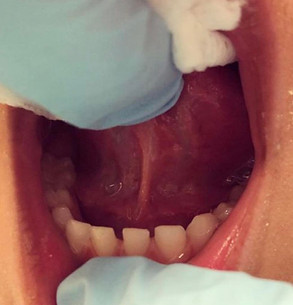Tethered Oral Ties

Body work is great for toungue ties and lip ties if they are biomechanically tethered.
We can assist you navigate the issue with your little one by the following ways
Assessment and Referral
Our training includes assessing the cranial structures and oral cavity. Identifying signs of tethered oral ties (like tongue-tie or lip-tie) during your evaluations. If there is a suspicion of a tie a referral to a specialist is made (e.g., pediatric dentist, ENT, or oral surgeon) for confirmation and treatment.
Pre- and Post-treatment Support
Before or after a patient undergoes a procedure to release a tongue-tie or lip-tie, cranial sacral therapy can be used to help prepare the body or aid in recovery. This gentle therapy can support relaxation and alignment of cranial structures, potentially enhancing the overall effectiveness of the procedure.
Integration with Care Plans
Collaborating with your healthcare providers involved with this issue, such as lactation consultants or speech therapists. Your cranial sacral therapy sessions can complement their treatments by addressing any residual tension or discomfort related to the oral tie release.
Postural and Muscular Alignment
Address any compensatory patterns or muscular tension that may have developed due to the oral tie. Cranial sacral therapy can help rebalance the body's musculoskeletal system, promoting better posture and movement patterns.
Possible Signs and Symptoms of Tethered Oral Ties
-
Painful to breastfeed
-
Nipple has an odd shape after breastfeeding
-
Baby snores
-
Gassy baby
-
Suck and swallow ratio is not 1:1
-
Baby came out with a weird head shape
-
Baby can't symmetrically move neck
